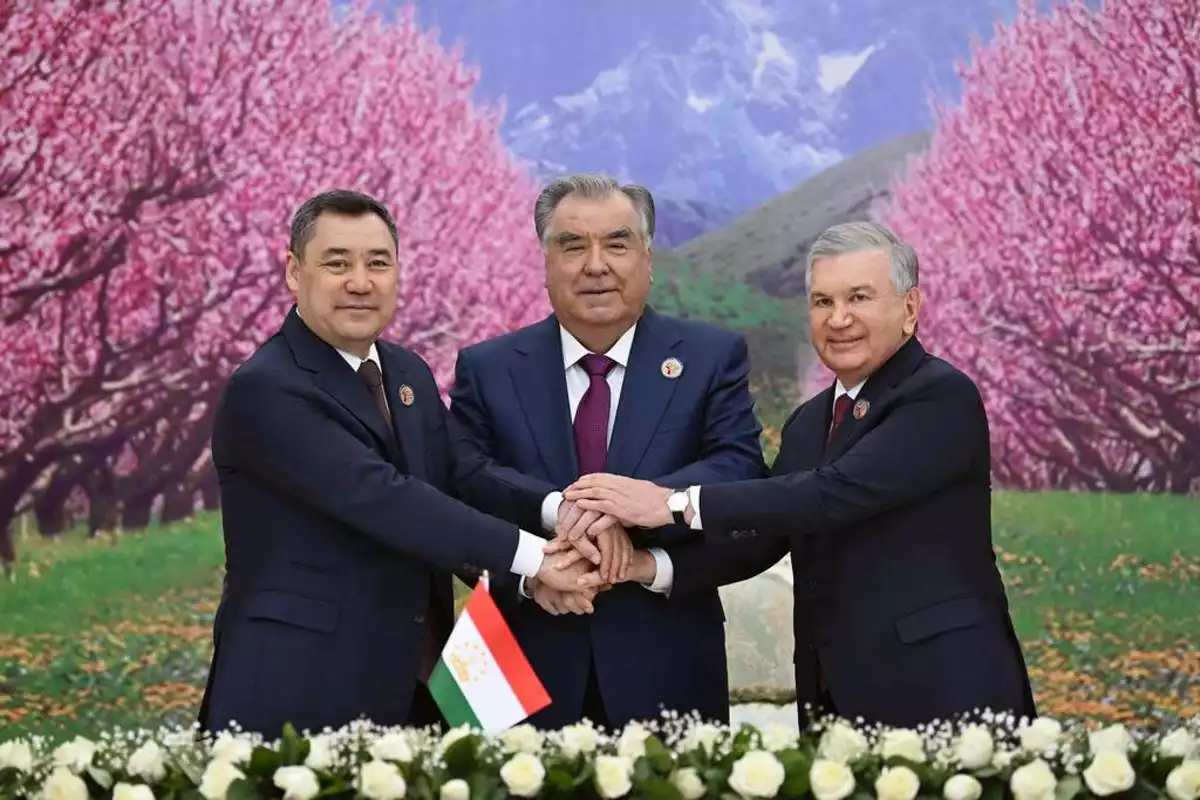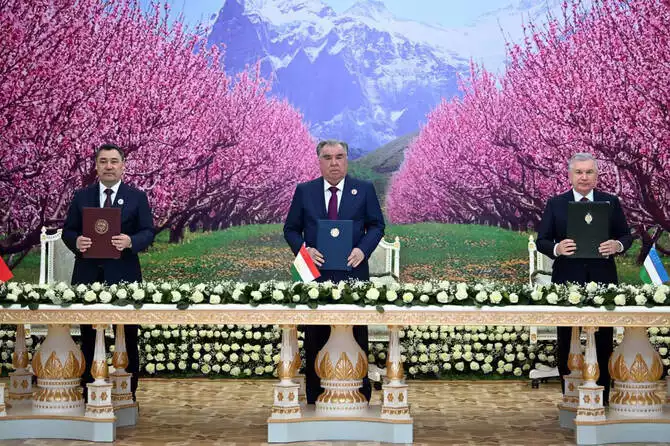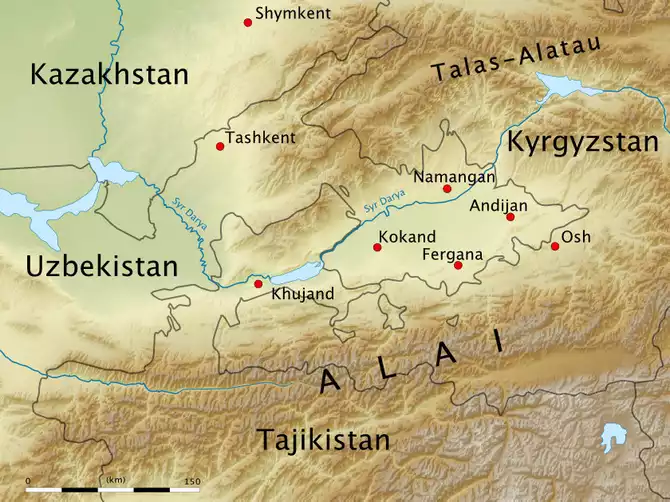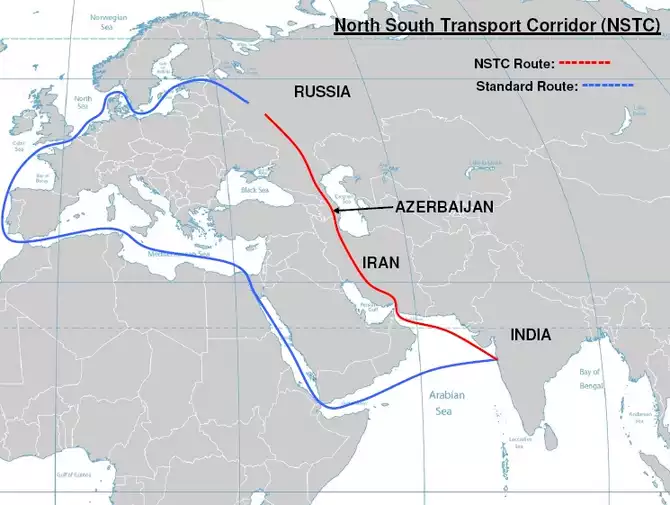
X: @president_uz
By Maria Zhigadlo
As Central Asia undergoes a historic shift toward regional cooperation and long-term stability, recent agreements between Tajikistan, Kyrgyzstan, and Uzbekistan mark a significant turning point. These accords, including the Khujand Declaration of Eternal Friendship, aim to resolve long-standing border disputes and promote joint development across political, economic, and environmental spheres.
Photo: biz.kz
To better understand the implications of these landmark developments, The Caspian Post spoke with Magbat Spanov, Doctor of Economic Sciences, Professor at Al-Farabi Kazakh National University, and expert at the Institute of Innovative Economy. In this interview, Professor Spanov explores the broader geopolitical importance of border agreements, the role of regional integration, and how initiatives such as unified visas and transnational infrastructure projects are reshaping the future of Central Asia.
- What is the significance of the agreement marking the junction point of the state borders between Tajikistan, Kyrgyzstan, and Uzbekistan for political stability and regional security in Central Asia?
- The recently signed agreements between the three countries place a firm full stop on potential regional conflicts that have lingered since the independence of our states.
These issues stem not only from the Soviet era but also from the post-Soviet period. The borders established during the Soviet Union often infringed upon the territorial integrity of the newly independent republics, creating significant complications.
These problems were particularly acute not only in the Caucasus, where borders were artificially imposed, but also in Central Asia, especially in the Ferghana Valley. In this densely intertwined area, ethnic groups lived side by side on overlapping territories. After the collapse of the USSR, enclaves emerged, inhabited by various nationalities, which became a source of ongoing tension.
Since the independence of our states in 1991, these enclaves have effectively remained potential flashpoints for ethnic, social, and territorial conflicts.
- What are the key provisions of the Khujand Declaration of Eternal Friendship, and how might it impact the future of interstate relations in the region?
Photo credit: khovar.tj
- The key pillars of the Khujand Declaration of Eternal Friendship are undoubtedly the pursuit of peace and joint efforts to ensure collective security and stability.
It is clear that economic cooperation plays a vital role in this. As is well known, the ambitious Chinese Belt and Road Initiative is being actively implemented across the post-Soviet countries of Central Asia. China is deeply interested in the region’s stability, viewing Central Asia as a single strategic space through which it can extend ties to the South Caucasus and Europe.
In this regard, China is heavily investing in the development of transport and logistics infrastructure in the region. Such investments require sustained political, military, and economic stability across the post-Soviet states.
Therefore, we can confidently say that many countries - especially those bordering Central Asia - are directly interested in the region’s stable economic and political development.
It is also worth noting the growing influence of the European Union and the United States, which are increasingly engaging in dialogue with Central Asian nations. For instance, high-level meetings are taking place under the “C5+1” format (Central Asia-USA), as well as similar initiatives from the EU. All this demonstrates the rising geopolitical importance of Central Asia.
- Can the signing of these documents be seen as a step toward deeper regional integration between Central Asian countries, and what forms might that take in the near future?
- Yes, it is also a step toward deeper regional integration between Central Asian states. Let us recall that back in the 1990s, there was the Central Asian Union, which included Kazakhstan, Uzbekistan, and Kyrgyzstan. Unfortunately, that format ceased to exist in the late 1990s for various economic and political reasons.

A map of the Fergana Valley. (Wikimedia Commons: Uwe Dedering)
However, the recent agreement on border delimitation and demarcation provides a vital foundation for developing a new economic policy. The countries of the region are primarily interested in advancing several key sectors.
First, the development of a “green economy” is a shared priority across Central Asia. This opens up opportunities for collaboration in clean technology, sustainable agriculture, and renewable energy sources.
Second, the region possesses significant energy potential - both in terms of natural resources and in traditional and alternative energy sectors. This creates favorable conditions for continued economic growth and sustainable development.
Moreover, in addition to the Belt and Road Initiative, which is establishing alternative delivery routes for Chinese goods to Europe, the North-South Transport Corridor is also taking shape. Russia, in particular, is pushing forward this route connecting Europe, the Caucasus, Iran, India, and South Asia.

North South Transport Corridor route via India, Iran, Azerbaijan and Russia/Wikipedia
In this context, Kazakhstan and Azerbaijan play a crucial role as key participants in both corridors. Their infrastructure enables the efficient use of Central Asia’s full transit potential.
Finally, the preservation of relative stability in the region creates greater opportunities for forming a coordinated stance and building economic ties with Afghanistan. Until recently, Afghanistan - sharing borders with several Central Asian countries - remained the primary source of potential instability and conflict risks.
- How might the initiative of introducing a unified visa for Central Asian countries influence tourism development and economic integration in the region?
- Despite the steady growth in tourist numbers, Central Asia’s full tourism potential remains underutilized.
This makes the idea - already under discussion between Uzbekistan and Kazakhstan - of a unified tourist visa for the region highly relevant. Such a system would allow a tourist who obtains a visa in one participating country to travel freely across all member states.
Experience shows that the arrival of the first tourists often leads to the assessment and appreciation of a region’s full potential. This, in turn, spurs new ideas and entrepreneurial activity.
A good example is the recent opening of a temporary passenger crossing at the “Bakhty-Pokitu” border checkpoint between Kazakhstan and China. Even before this development, there was strong economic cooperation between the two countries. Now, we are witnessing a surge in joint ventures launched by Chinese and Kazakh companies - both in Kazakhstan and in China.
- What specific infrastructure and economic projects are currently being implemented between Kyrgyzstan, Tajikistan, and Uzbekistan, and what is their outlook?
- When it comes to specific infrastructure and economic initiatives, the most pressing issue is the fairer distribution of water resources.
As is well known, there are two upstream countries in the region - Kyrgyzstan and Tajikistan - where the major water sources originate. At the same time, countries such as Uzbekistan and Kazakhstan depend heavily on these water resources.
This context makes the development of joint infrastructure agreements especially important - particularly in the field of transport and logistics. This includes the construction of railway and highway connections between the countries, which is a key initial step.
Another critical area is the enormous potential for hydropower development. In the past, some countries opposed certain projects. For example, the construction of the Rogun Hydropower Plant in Tajikistan raised serious concerns in Uzbekistan. However, we are now seeing a more constructive approach, and even previously skeptical states are showing interest in cooperation in this field.
Of course, many issues remain unresolved, and further work on infrastructure and economic projects will continue. Nonetheless, we can confidently say that the threat of potential conflicts - whether ethnic or political - related to competition over resources is diminishing.
This paves the way for building mutually beneficial, cooperative economic and political relationships. Central Asian countries now increasingly align their positions on key economic and regional policy matters.
It is also important to highlight that Kazakhstan was the first country in Central Asia to fully resolve its territorial issues with neighboring states through the signing of agreements on the inviolability of borders.
Back in the 2000s, Kazakhstan concluded land border agreements with several neighboring countries - including Kyrgyzstan, Uzbekistan, China, Russia, and Turkmenistan. In the 2010s, the international status of the Caspian Sea was determined, and a corresponding agreement was signed among the littoral states, including Kazakhstan.
In doing so, Kazakhstan set a regional precedent - on the one hand, through its consistent policy of signing international treaties, and on the other, by demonstrating that territorial disputes must be resolved through compromise and dialogue, not confrontation.
The signing of treaties on border inviolability and the renunciation of military solutions to disputes has become a key step toward ensuring long-term stability and security in the region.
Share on social media